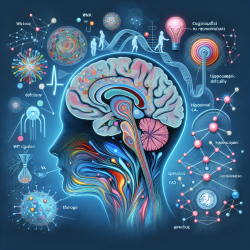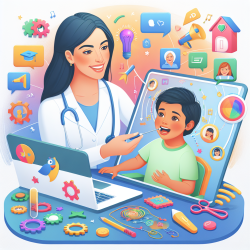Introduction to Individualized Education Plans (IEPs)
Individualized Education Plans (IEPs) are essential tools designed to support students with disabilities or learning difficulties in Quebec. These plans are tailored to meet the unique needs of each student, providing a structured approach to help them achieve their educational goals. This guide will explore the key components and processes involved in developing and implementing effective IEPs, drawing insights from the "Reference Framework for the Establishment of Individualized Education Plans" by MELS, 2004.
The Role of IEPs in Education
IEPs serve as a roadmap for educators, parents, and students, outlining specific goals and strategies to address the student's needs. According to the Education Act, the principal, in collaboration with the student's parents, staff, and the student (if possible), must establish an IEP that aligns with the school board's policies. This plan is periodically evaluated to ensure it remains relevant and effective.
Phases of the Individualized Education Plan
- Information Gathering: Collect comprehensive data on the student's strengths, difficulties, and needs.
- Consensus Building: Prioritize the student's needs and establish clear objectives.
- Strategy Development: Determine the necessary strategies, resources, and timeframes to achieve the objectives.
- Implementation: Execute and monitor the strategies, continuously evaluating the student's progress.
- Review: Regularly assess the IEP, making adjustments as needed in consultation with all stakeholders.
Planning and Interventions
Effective planning involves reviewing the student's records, consulting with relevant parties, and performing evaluations to identify the most effective interventions. The focus should be on differentiated teaching and other tailored strategies to support the student's learning journey.
Identifying Abilities and Needs
IEPs should highlight the student's abilities that contribute to their success, such as social skills or problem-solving capabilities. Similarly, identifying the student's needs is crucial, focusing on areas requiring development to meet educational goals. Avoid focusing on non-developmental aspects, such as medication adherence, as these are outside the IEP team's control.
Setting Objectives
Objectives in an IEP must be specific, measurable, and realistic. They should be defined using action verbs and include indicators for evaluation. For instance, an objective might be for the student to complete a writing exercise within an extended timeframe.
Types of Interventions
- Strategies: Actions to bridge the gap between the current and desired situations, such as conflict-resolution techniques.
- Adaptation: Modifications to the learning environment or evaluation process to accommodate the student's needs without altering the evaluation criteria.
- Modification: Changes to the evaluation criteria, which may affect the student's eligibility for a diploma.
Transition Planning
Transitioning from school to work is a critical phase for students with special needs. IEPs should include long-term planning for social and occupational integration, covering areas like work, leisure, and transportation. This planning ensures a smooth transition into adult life.
Review and Evaluation
Regular follow-up and evaluation are vital to ensure the IEP remains effective. Reviews can lead to maintaining, modifying, or dropping objectives and strategies based on the student's progress. Collaboration among all participants is crucial during this phase.
For more information, please follow this link.










